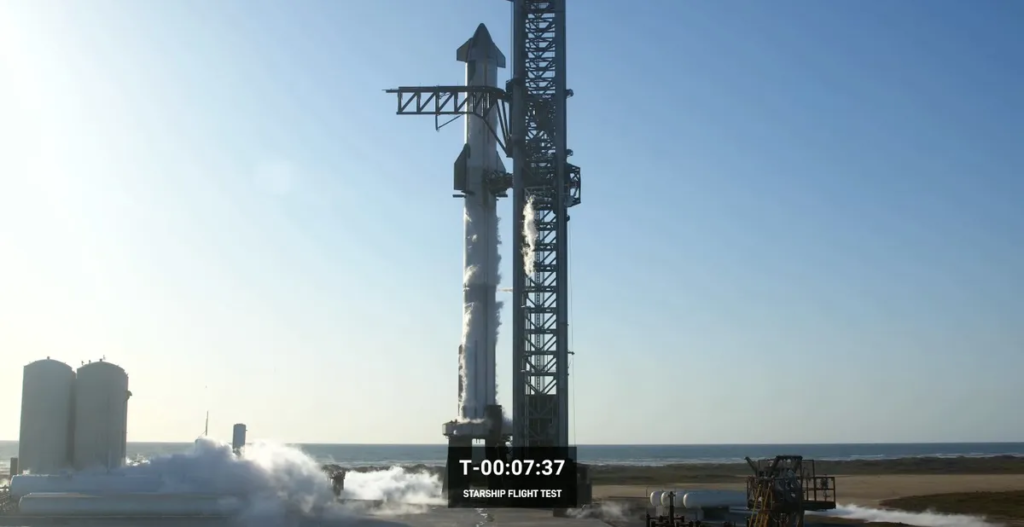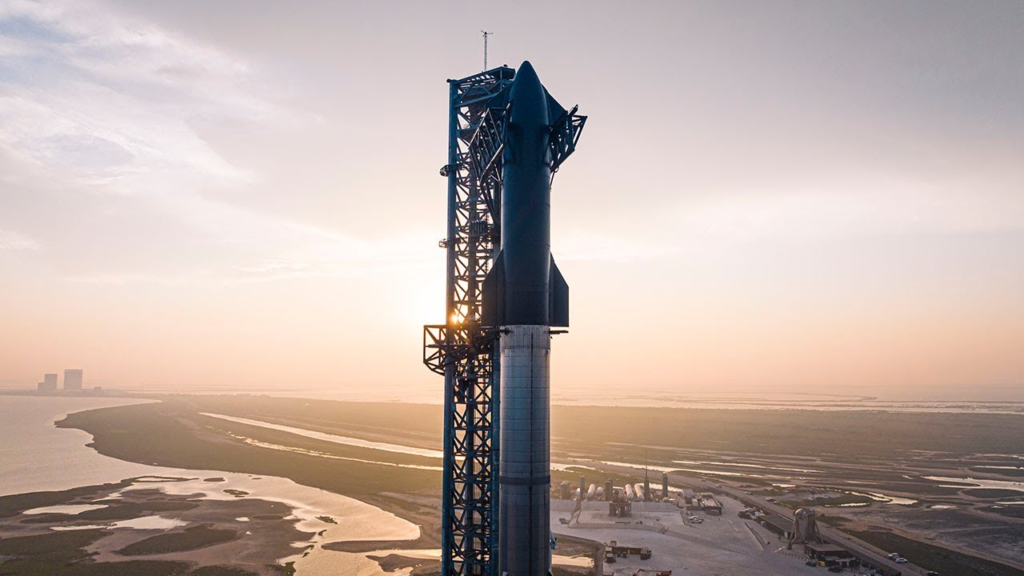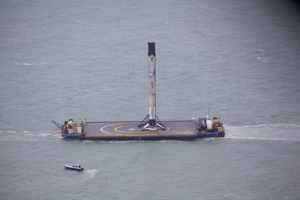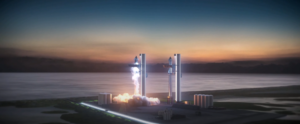
Why Exactly Did SpaceX Scrub Starship’s First Launch Attempt?
Earlier today we were just minutes away from the first launch of the world’s most powerful rocket. Unfortunately, a few issues came up that caused the team at SpaceX to hold off on the launch and scrub today’s attempt. It’s important to point out that when launching any rocket for the first time especially such a unique one like Starship, complications are bound to come up.
With this in mind, it brings up the question of what exactly caused SpaceX to scrub the launch and what can we expect in the coming days. Primarily, a pressurant valve appears to have been the main deciding factor. After the problem was determined, work began to see if it could be fixed during the countdown. Eventually, SpaceX decided to err on the side of caution and turn the launch attempt into a wet dress rehearsal.
Despite never lighting an engine, a bunch of valuable information was gained that will be applied to the next attempt very soon. Here I will go more in-depth into exactly what caused the scrub, SpaceX’s plan, what to expect in the next 48 hours, and more.
Launch Scrub

Earlier this morning the SpaceX stream began and we watched as the full Starship stack began filling with propellant. The countdown got all the way to the final minutes before new information was revealed. Specifically, SpaceX announced it was scrubbing the launch of its Starship vehicle and Super Heavy booster less than 10 minutes before the scheduled 9:20 a.m. Eastern liftoff, after reporting a pressurization issue with the booster.
Around that exact time, Elon Musk tweeted saying, “A pressurant valve appears to be frozen, so unless it starts operating soon, no launch today.” In the days prior, SpaceX was confident the weather would be good with the only main concern being wind shear. However, both turned out fine and almost everything was in perfect shape for a launch. In this case, the company had reported no other major issues with the vehicle which was a good sign. SpaceX continued with the countdown until the T-40 second mark, finishing propellant loading and using the launch attempt as a wet dress rehearsal.
Focusing more on the valve error, this type of issue is common within the launch community. Practically whatever the rocket, it’s likely at one point a valve related issue has come up. During an interview yesterday, Elon even talked about valves and the difficulty of designing valves that work under freezing temperatures, hot temperatures, and valves that can go from freezing to hot and still work properly. All this being said, what’s most important is that the issue was identified and now the teams at SpaceX are working to figure out exactly why the issue arose and how they can make sure it doesn’t happen again.
As far as when we can expect the next attempt, commentators on the SpaceX webcast said it would be a minimum of 48 hours before they could make another launch attempt. This means we could see another attempt on the 19th likely around the same time. While the launch scrub is not the best outcome possible, it still provided the opportunity for a host of information to be gained. Not long after the scrub Elon tweeted again highlighting, “Learned a lot today, now offloading propellant, retrying in a few days …”
With about 7 minutes left on the clock, one of the commentators said, “Now the good news is everything been going good, we’ve just been working that one issue. We are continuing the count, team will get this as an excellent opportunity to run the end to end of the system.” As far as what extra information was gained, important final steps such as the guidance system performing its final alignment, and final thrust vector control checkouts of the Raptor engines were all performed despite the scrub. In addition to the physical events that Starship performed, the crews working on Starship and in mission control got some great experience on an actual attempt with all these systems.
Overall, the first attempt went well as both the vehicle and stage 0 are still perfectly intact. We can expect some more information to come out in the next few days as SpaceX prepares for the next attempt.
Flight Profile & Plan

During the countdown, SpaceX provided additional information about the flight profile and plan for this initial test flight, even including graphics as well. It all starts seconds before the clock hits 0, when the rocket’s Raptor engines ignite and then Starship lifts off. Assuming Starship clears the tower, it will continue to accelerate and gain altitude. Just 55 seconds after liftoff and the launch vehicle will reach Max q, the moment of peak mechanical stress on the rocket. For the next 2 minutes, Super Heavy will continue to fire its engines and accelerate Starship into position. 2 minutes and 49 seconds in and the Booster main engine cutoff occurs. Three seconds later and Super Heavy separates from Starship and then performs a flip maneuver to position it for reentry and descent. For the next 5 seconds, the two stages will separate before Starship ignites its vacuum optimized engines. Next, the booster boostback startup burn commences 3 minutes and 11 seconds after liftoff. For the next whole minute, this burn continues until T + 4 minutes and 6 seconds. Following this burn, the booster will fall back toward Earth picking up a significant amount of speed. At T + 7 minutes and 40 seconds, the booster landing burn startup occurs. This burn lasts for the next 31 seconds before its cutoff and the booster falls into the ocean in the Gulf of Mexico.
At T + 9 minutes and 20 seconds, Starship cuts off its engines. For the next hour and 8 minutes, the upper stage will be in its coast phase. This is until T + 1 hour and 17 minutes when Starship begins to enter the atmosphere above the pacific ocean. 11 minutes after the start of reentry and the vehicle is transonic. Finally, a full 1 and a half hours after liftoff, the Starship upper stage is expected to impact the water off the coast of Hawaii going extremely fast. This is because no flip maneuver is going to be attempted. This is the exact flight profile assuming everything goes perfectly.
In reality, SpaceX will be very happy with practically every result that keeps Stage 0 intact. Stage 0 is the main pad infrastructure supporting Starship such as the orbital launch tower and mount. Both took quite a bit of time to fully construct which is a driving reason for the company to avoid destroying them. Even if soon after clearing the pad Starship explodes, SpaceX will still be somewhat satisfied. In the interview yesterday with Elon, he spoke to this a bit. Specifically, he said, “The funny thing is we are actually dying to get this rocket off no matter what happens to it because there are so many improvements between booster 7 and booster 9, literally hundreds. We moved from hydraulic thrust vector control to electric, the entire heat shield structure is completely redesigned and more.” He went on to talk about other improvements with the engines and the structure surrounding them on Booster 9. All of which cant be put to the real test until the first Starship with Booster 7 and Ship 24 lifts off.
In the grand scheme of things, the importance of this first launch and the Starship program, in general, cannot be understated. As we know, Starship is a fully reusable transportation system designed to carry both crew and cargo to Earth orbit, help humanity return to the Moon, and travel to Mars and beyond. With a test such as this, success is measured by how much SpaceX can learn, which will inform and improve the probability of success in the future as SpaceX rapidly advances the development of Starship. In the past few years, we have watched the SpaceX team complete multiple sub-orbital flight tests of Starship’s upper stage from Starbase, successfully demonstrating an unprecedented approach to controlled flight. These flight tests helped validate the vehicle’s design, proving Starship can fly through the subsonic phase of entry before re-lighting its engines and flipping itself to a vertical configuration for landing.
In addition to the testing of Starship’s upper stage, the team has conducted numerous tests of the Super Heavy rocket, which include the increasingly complex static fires that led to a full-duration 31 Raptor engine test – the largest number of simultaneous rocket engine ignitions in history. The team has also constructed the world’s tallest rocket launch and catch tower. At 146 meters, or nearly 500 feet tall, the launch and catch tower is designed to support vehicle integration, launch, and catch of the Super Heavy rocket booster. This morning SpaceX tweeted mentioning, “As we venture into new territory, we continue to appreciate all of the support and encouragement we have received from those who share our vision of a future where humanity is out exploring among the stars!” It’s clear the company is extremely excited about this mission and are doing everything in their power to ensure it’s a success.
Conclusion
SpaceX for the first time ever was minutes away from launching Starship this morning. While a valve problem ended up scrubbing the launch, SpaceX decided to continue the countdown and turn the attempt into a wet dress rehearsal. As we wait for the next attempt, we can expect SpaceX to be busy problem solving in preparation for the 19th. We will have to wait and see how it progresses and the impact it has on the space industry.



